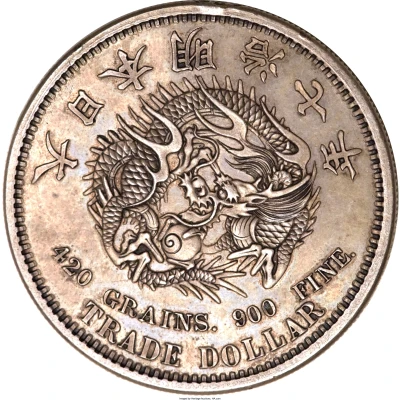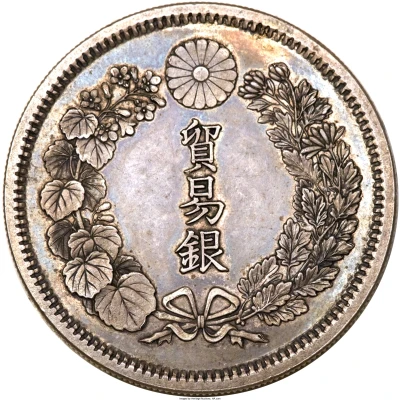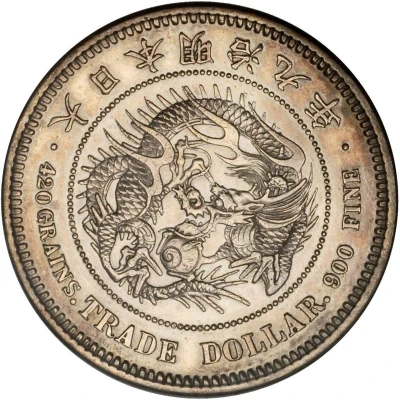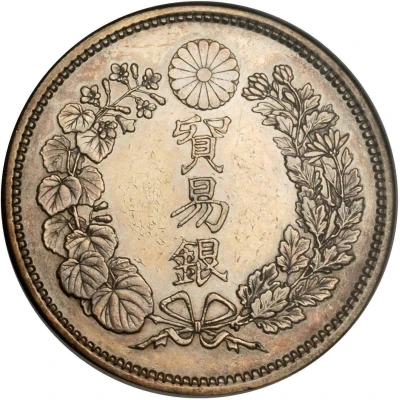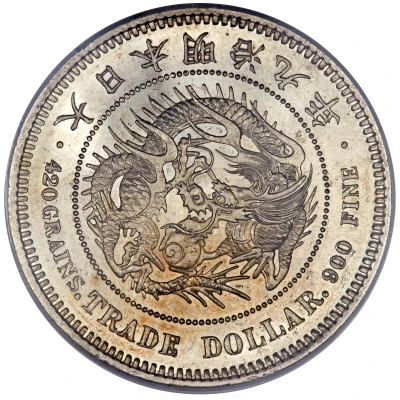
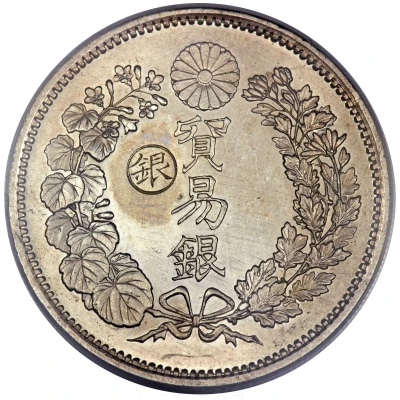

© Heritage Auctions
1 Trade Dollar - Meiji countermarked
| Silver (.900) | 27.22 g | 38.58 mm |
| Issuer | Japan |
|---|---|
| Emperor | Meiji (1867-1912) |
| Type | Standard circulation coin |
| Years | 8-10 (1875-1877) |
| Calendar | Japanese - Meiji era |
| Value | 1 Trade Dollar (105⁄104 JPY) |
| Currency | Yen (1871-date) |
| Composition | Silver (.900) |
| Weight | 27.22 g |
| Diameter | 38.58 mm |
| Shape | Round |
| Technique | Milled, Countermarked |
| Orientation | Coin alignment ↑↓ |
| Demonetized | Yes |
| Updated | 2024-10-05 |
| Numista | N#175947 |
|---|---|
| Rarity index | 93% |
Reverse
Chrysanthemum Flower (Coat of Arms & Emperor's Royal Seal)
Branches of Paulownia Flower (Heart shaped leaf) and Chrysanthemum Flower on either side of the value
Counterstamped with on let side of value
Lettering:
銀貿
易
銀
Translation:
Trade silver
Silver
Edge
Reeded
Comment
The diameter of the countermark measured approximately 4.5mm.Countermark on the left side of the coin indicate that the countermarking was done in Osaka mint.
Interesting fact
One interesting fact about the 1 Trade Dollar - Meiji (countermarked) 8-10 (1875-1877) from Japan is that it was minted during a time of rapid modernization and westernization in Japan, known as the Meiji Restoration. This period saw significant changes in Japan's economy, politics, and culture, and the introduction of new currency systems was a part of these reforms. The Trade Dollar was minted to facilitate international trade and was equivalent in value to the Mexican Dollar, which was widely used in East Asia at the time. The countermark on the coin indicates that it was issued by a local authority, rather than the central government, and the 8-10 mintage years indicate that it was produced during a specific time period.
